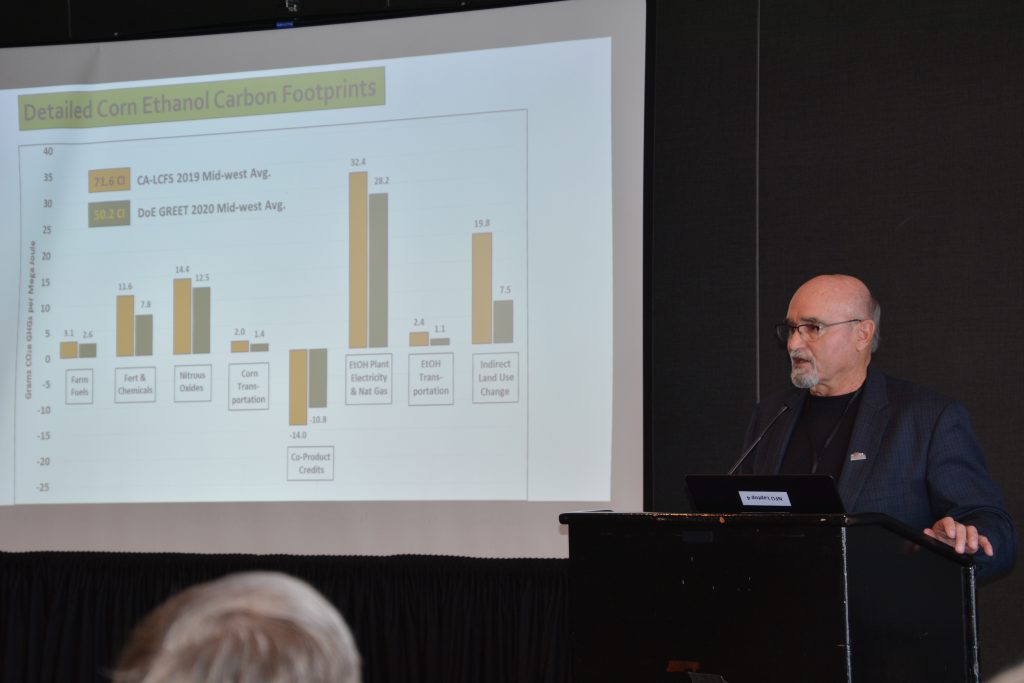Today’s Corn Farmers Leave A Zero Carbon Footprint

In addition to feeding and fueling the world, farmers across the Corn Belt are helping sequester carbon by raising corn for ethanol, livestock feed and Fourth of July barbecues.
“Corn is one of only a handful of grasses (C4) which are superior at extracting carbon dioxide from the air and fixing it in plants and sequestering it in the soil,” says Ron Alverson, a Chester, S.D., corn farmer.
Alverson spoke to a crowded room of family farmers and ranchers during a workshop at the National Farmers Union Convention in Savannah, Ga.
During the workshop, he explained how raising corn, while at the same time implementing soil health-building practices, like no-till, corn growers are able to sequester carbon. “When herbicides came along, that allowed us to say goodbye to the plow and cultivator forever. With low tillage management, such as ridge till, corn plants are able to fix the CO2 in the soil, building up soil carbon, increasing our soil’s organic matter.”
No-till farming for 35 years now, soil tests confirm that Alverson’s corn acres are restored to native grass levels. “We are zero carbon farmers. And we’re not unusual. Many Midwest corn farmers can say the same thing.”
E30’s role in carbon sequestration
Corn pulls carbon out of the atmosphere and stores or sequesters it in the soil through photosynthesis. Corn is especially efficient at carbon sequestration because it produces a lot of biomass.
During his talk, Alverson pointed to a study which utilized satellite imagery to detect the intensity of photosynthesis in regions across the globe. The study showed, that thanks to its corn fields, a greater amount of photosynthesis takes place in the Corn Belt during the Northern Hemisphere summer than takes place in tropical rain forests during their peak season.
When introducing Alverson’s talk, South Dakota Farmers Union President Doug Sombke, explained that increased demand for renewable fuels, like ethanol, which in turn drives demand for corn, helps clean the air in two ways. “High ethanol blends, like E30, replace carcinogenic additives in gasoline – keeping them out of the air we breath. And because of its ability to sequester carbon, the corn used to produce ethanol is also cleaning up the air,” Sombke says. “Really, corn-based biofuels are a win-win.”
To learn more, visit www.sdfu.org.

